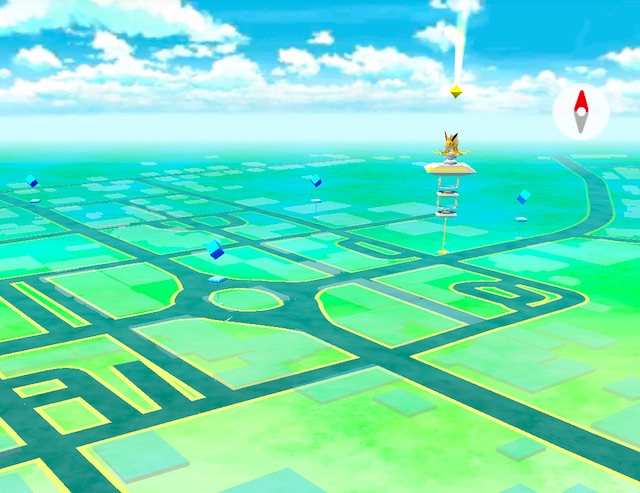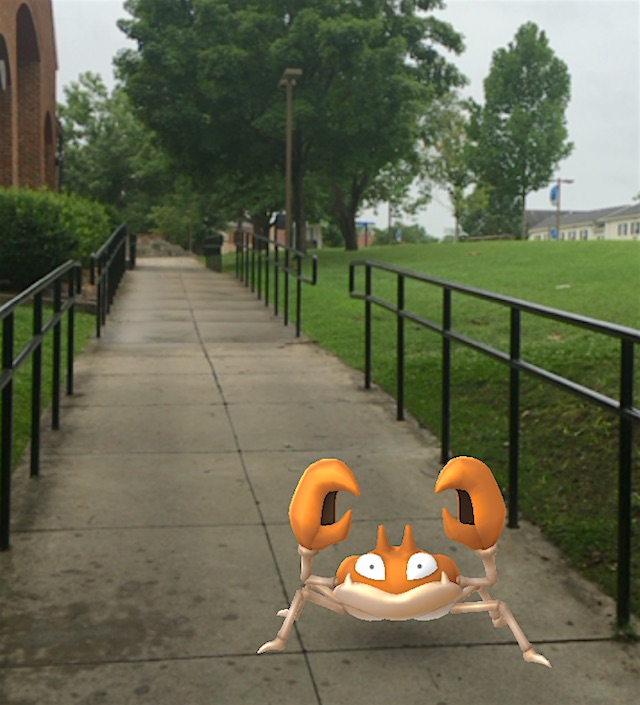| ||||||||||
Dr. Ronald P. Rogers CHIROPRACTOR Support for your body's natural healing capabilities 270-384-5554 Click here for details 


Columbia Gas Dept. GAS LEAK or GAS SMELL Contact Numbers 24 hrs/ 365 days 270-384-2006 or 9-1-1 Call before you dig Visit ColumbiaMagazine's Directory of Churches Addresses, times, phone numbers and more for churches in Adair County Find Great Stuff in ColumbiaMagazine's Classified Ads Antiques, Help Wanted, Autos, Real Estate, Legal Notices, More... 

|
A Columbia, KY Guide to Pokemon Go Pokemon go is probably the biggest social phenomenon of 2016. There are tons of players, numbers so high that servers can't keep upwith demand. Within 5 days, Pokemon GO has more users than Twitter. The game has given young players a new, compelling reason to get out and explore and use their downtowns, and repeatedly visit parks, churches and libraries. Even if you don't play the game, that should be a pretty exciting development for anyone who values Walking Culture or works to keep Main Street relevant. By Pen Waggener and Evan Waggener What is Pokemon Go? Pokemon Go is the latest version of the 20-year-old Japanese game franchise, "the second-most successful and lucrative video game-based media franchise in the world, behind only Nintendo's Mario franchise." (Wikipedia). It's incredibly popular with teenagers, and also with Millenials who grew up with the characters. Pokemon Go gameplay is a mix of Scavenger Hunt and King of the Hill. It's played on smartphones, using a free app and a mix of Google Maps, GPS coordinates, and a database of special real world locations, called PokeStops and Gyms. Players visit Stops for supplies, hunt and collect cartoonish Pokemon characters by moving around in the real world, and then visit Gyms to challenge each other's characters to battle it out for bragging rights at that location. Augmented Reality: A pretty good excuse for a walk Pokemon Go players can find Pokemon running wild anywhere. The game is based on Google Maps and GPS, so moving around in the game requires moving around in the real world. While it's possible to play in a car, Pokemon Go works best on foot or on a bicycle. The game's loading graphic even depicts someone on foot, with a note to pay attention to your surroundings. Gameplay is superimposed over a live image from the phone's camera, so that Pokemon seem to be running around in the real world, and all the players in the same location can try to catch the same Pokemon characters when they appear. It's imaginative gameplay that tends to get them involved in meaningful exercise and encourages teamwork and communication. Important places in the game tend to be historically important places for people to gather in the real world, such as churches, libraries, parks, post offices, and historical markers. In Columbia, the US Post Office and the fountain at the Justice Center are virtual Gyms, which players will visit to test their Pokemon against other players. (Control can switch frequently, but when we checked yesterday, the Gym at the Justice Center fountain was controlled by Blue Team's LunarMatt with a 748CP Vaporeon, and the Gym at the Post Office on Burkesville Street was controlled by Blue Team's PegWarrior, with a 945CP Snorlax. Ask someone under 25 to explain.) Players can get supplies and find more than average numbers of Pokemon when they visit Pokestops. If you see groups of kids or young adults traveling around downtown looking at their smartphones, odds are good that they're checking in at one of the following virtual Pokestops in Columbia:
As of July 12, 2016, the average daily usage of the Pokemon Go "app on Android devices exceeded Snapchat, Tinder, Instagram, and Facebook." (Wikipedia) The huge number of players in the virtual Pokemon world is having lots of real world effects. Restaurants and coffeeshops near the Pokestops in many towns are finding a substantial increase in traffic, and the ones that welcome players are seeing increased sales because of it. Lots of youth ministers have taken the opportunity provided by increased foot traffic at their churches to hand out water, provide wifi, or set up stations to recharge overworked cell phones, in exchange for some quality time with kids who might not otherwise have stopped by their church. It may be a fad that's gone as quickly as it appeared--or this summer may end up as the Millenials' version of Woodstock--but for now Pokemon Go has given young players a new, compelling reason to get out and explore and use their downtowns, and repeatedly visit parks, churches and libraries. Even if you don't play the game, that should be a pretty exciting development for anyone who values Walking Culture or works to keep Main Street relevant. This story was posted on 2016-07-13 17:09:05
Printable: this page is now automatically formatted for printing.
Have comments or corrections for this story? Use our contact form and let us know.
More articles from topic Technology News:
Photography: Using fast shutter speed to capture flight Southside Elementary Designated 300th ENERGY STAR School Campbellsville Elementary receives tablet donation from Amazon Adair Schools take giant $549,678.65 leap forward in technology Link: President wants open markets for Tv set top boxes CHS students tutor younger students in Hour of Code Ralph Waggener: Neal Gold did our coding 37 years ago Principal Jones offers to arrange demonstration of writing code Supt. Reed addresses Mary Bardin's Question Dave Rosenbaum: Not much time for coding at Yellow Hammer View even more articles in topic Technology News |


|
||||||||
|
| ||||||||||
|
Quick Links to Popular Features
Looking for a story or picture? Try our Photo Archive or our Stories Archive for all the information that's appeared on ColumbiaMagazine.com. | ||||||||||
|
Contact us: Columbia Magazine and columbiamagazine.com are published by Linda Waggener and Pen Waggener, PO Box 906, Columbia, KY 42728. Please use our contact page, or send questions about technical issues with this site to webmaster@columbiamagazine.com. All logos and trademarks used on this site are property of their respective owners. All comments remain the property and responsibility of their posters, all articles and photos remain the property of their creators, and all the rest is copyright 1995-Present by Columbia Magazine. Privacy policy: use of this site requires no sharing of information. Voluntarily shared information may be published and made available to the public on this site and/or stored electronically. Anonymous submissions will be subject to additional verification. Cookies are not required to use our site. However, if you have cookies enabled in your web browser, some of our advertisers may use cookies for interest-based advertising across multiple domains. For more information about third-party advertising, visit the NAI web privacy site.
| ||||||||||























































